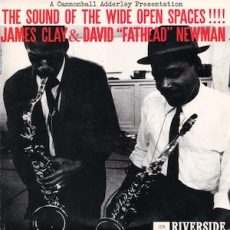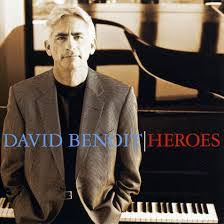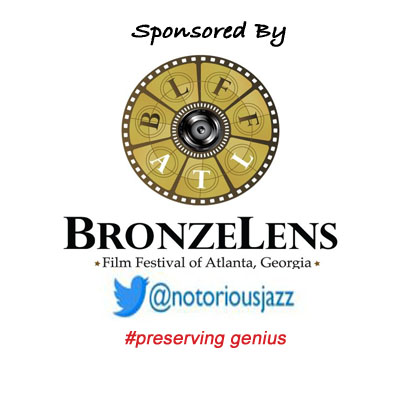
Daily Dose Of Jazz…
Wolter Wierbos was born on September 1, 1957 in Holten, Overijssel, Netherlands. Self-taught, he started on a wind instrument in a drum band. He created a unique sound on his trombone and beginning in 1979 he became active in the Dutch creative jazz music scene.
He plays contemporary and improvised music, making excursions to post-punk and toured with various formations throughout Europe, Canada, the US and Asia. Wolter has played with Cumulus, JC Tans & Rockets, Theo Loevendie Quintet, Guus Janssen Septet, Loos, Maarten Altena Ensemble and Podiumtrio. He’s led his own band, Celebration of Difference, and has been involved in theater, dance, television and film projects. He has also played with Henry Threadgill, The Berlin Contemporary Jazz Orchestra, the European Big Band led by Cecil Taylor, the John Carter Project, Mingus Big Band.
Maintaining a solo career he has a running project under the name Wollo’s World, and has recorded on more than 100 compact discs and LPs, has released two solo cds, and a round-trip tour of his horn. The highlight in his career was the Boy Edgar award in 1995 and the Podiumprijs for Jazz and Improvised Music.
Trombonist Wolter Wierbos, who is best known as a member of the ICP Orchestra and is currently performing with Misha Mengelberg’s ICP, the Gerry Hemingway Quintet, Franky Douglas Sunchild and Bik Bent Braam, continues to perform, compose and record.
More Posts: bandleader,history,instrumental,jazz,music,trombone

Requisites
Funky ~ Gene Ammons All-Stars | By Eddie Carter
Next from the library is a significant 1957 jam session led by tenor saxophonist Gene Ammons with a first-class supporting cast titled Funky (Prestige PRLP 7083). His bandmates on this date are Art Farmer on trumpet, Jackie McLean on alto sax, Mal Waldron on piano, Kenny Burrell on guitar, Doug Watkins on bass, and Art Taylor on drums. My copy is the 1986 U.S. Original Jazz Classics Mono reissue (Prestige OJC-244).
Kenny Burrell’s Funky starts Side One with Doug’s bass intro, developing into the ensemble’s relaxing opening chorus. Gene solos first, making effective use of his mellow tone in a flawless opening statement. Kenny eases into a delightful reading next, complementing the rhythm section perfectly. Jackie cruises methodically into a casually carefree performance by Art, bristling with good feelings. Mal comes in next with a swinging presentation, and then Doug closes with a laid-back comment ahead of the ensemble’s closing chorus.
Pint Size, the first of two tunes by tenor saxophonist Jimmy Mundy, concludes the first side leisurely with the septet’s tight harmony in unison with the melody. Ammons lays down a compelling opening solo, emitting an infectious excitement as it unfolds. Farmer sustains the contagious rhythm next by inviting us to snap our fingers, tap our toes or get up and dance. McLean provides equal amounts of passion and flair in the third reading. Burrell does a masterful job executing a series of skillful phrases, and Waldron approaches the finish line with a sparkling performance culminating in the climax.
Stella By Starlight by Victor Young and Ned Washington first appeared in the 1944 supernatural horror film The Uninvited and opens Side Two. The ensemble opens deceptively at a slow ballad tempo with a warm, sinuous intro by Wal and Gene’s gentle theme. The pace picks up dramatically for each solo, beginning with the leader delivering his message confidently. Art takes center stage next for some enthusiastic solo work, and then Jackie swings with a happy approach, showing remarkable skill. Kenny echoes the merriment of his colleagues with an enthusiastic performance. Mal ends with a quaint interpretation prior to the leader’s return to the slow tempo for the close.
Jimmy Mundy’s King Size sets up things with a solo introduction by Ammons that segues into the group’s lively melody. Gene swings with immense energy in an exquisite opening solo, with Farmer shadowing him for one chorus. The trumpeter answers him with some down-home cooking for an incredibly flavorful dish. McLean soars skyward with avid enthusiasm in the next reading. Burrell’s guitar surges with scintillating radiance; then, Waldron takes the spotlight last for an adrenaline-fueled solo powered by the rhythm section’s dazzling groundwork. The principal soloists share a few final observations in the front line’s closing chorus, featuring a brief solo by Watkins into the song’s finale.
Bob Weinstock supervised the original session of Funky, and the remastering of Rudy Van Gelder’s original mono tapes by Fantasy is superb, with an excellent soundstage of all the instruments emerging through the speakers vividly! Gene Ammons played and recorded with some of the greatest names in jazz. He got his nickname “Jug” from Billy Eckstine, whose band he was a member of in 1944, and he later played in Woody Herman’s Second Herd. Gene Ammons’s jazz career was interrupted twice because of two prison sentences (1958-1960) and (1962-1969) for narcotics possession.
He lost his battle against cancer on August 6, 1974, at the age of forty-nine. Gene Ammons and his bandmates are in breathtaking form and tone throughout this album, and the music heard flows as naturally as water downhill into a stream. If you are a fan of his or are just discovering his music, I hope you will consider Funky by Gene Ammons for a spot in your library on your next record-shopping trip. It is a well-rounded program of bop and soul jazz from Prestige, the label known for outstanding jam session LPs during the fifties and sixties!
~ Stella By Starlight – Source: JazzStandards.com ~ Gene Ammons – Source: Wikipedia.org © 2024 by Edward Thomas Carter
Requisites
The Sound Of The Wide Open Spaces ~ James Clay and David “Fathead” Newman | By Eddie Carter
This morning’s album from the library brings together two Texas tenor saxophonists for the first of two recordings together. The Sound of The Wide Open Spaces (Riverside RLP 12-327/RLP 1148) is a 1960 release that marks the debut of James Clay and the second album by David “Fathead” Newman. The album’s title refers to the vast landscape of the Lone Star state. This hard bop blowing session allows both musicians to have a superb showcase in which to work. Wynton Kelly on piano, Sam Jones on bass, and Arthur Taylor on drums complete the quintet. My copy is the 1986 U.S. Original Jazz Classics Stereo reissue (Riverside OJC-257).
The quintet starts Side One with the opening ensemble to Wide Open Spaces by Babs Gonzales. David gets right down to business first. James takes the baton and gives an exhilarating interpretation; then Wynton comes in for a spirited reading. Clay and Newman return to share an energetic exchange ahead of the closing chorus. The front line eases up on the gas to begin They Can’t Take That Away From Me by George and Ira Gershwin. James steps into the opening statement with extreme confidence. David returns the compliment on the following reading, and then Wynton closes things out with masterful ease, leading to the theme’s reprise and ending.
Side Two begins with the rhythm section’s introduction to Some Kinda Mean by Keter Betts ahead of the front line’s laid-back theme. James is up first and moves leisurely through the opening solo. David is equally easygoing in the following reading. Wynton’s carefree interpretation precedes the theme’s restatement and the trio’s climax. James switches to the flute for the Johnny Burke, Bob Haggart standard, What’s New? The trio opens gently ahead of David’s tender melody. James leads the way with an emotionally sensitive statement. Wynton comes in next for a beautiful reading, and David delivers a gorgeous finale leading to the polite ending.
Figger-ration by Babs Gonzales takes off with the rhythm section’s quick introduction to the front line’s brisk melody. David is off to the races in the opening solo, then James takes a vigorous romp next. Wynton illustrates his agility in the following interpretation. Sam takes a short walk leading to a vigorous exchange by both horns ahead of the reprise and close. Julian “Cannonball” Adderley produced The Sound of The Wide Open Spaces and Jack Higgins was the recording engineer. The sound quality of this OJC reissue is exceptional, with an excellent soundstage allowing the instruments to come through your speakers vibrantly, as if the musicians are playing in front of your sweet spot, providing an immersive experience for the listener.
The Sound of The Wide Open Spaces by James Clay and David “Fathead” Newman is an overlooked, but wonderful album that, in my opinion, is a perfect place to start if you’re beginning your journey into either musician’s discography. Its got good tunes with great solos by five remarkable musicians who together have created an album that should appeal to any jazz collector and become a welcome addition to any jazz fan’s library!
~They Can’t Take That Away From Me, What’s New? – Source: Jazz Standards.com © 2024 by Edward Thomas CarterMore Posts: choice,classic,collectible,collector,history,instrumental,jazz,music,saxophone

Daily Dose Of Jazz…
David Bryan Benoit was born in Bakersfield, California on August 18, 1953. He studied piano at age 13 with Marya Cressy Wright and continued his training with Abraham Fraser, who was the pianist for Arturo Toscanini. He attended Mira Costa High School and went on to focus on theory and composition at El Camino College, studying orchestration and later took film scoring classes at UCLA. He went on to study music conducting and worked with Jeffrey Schindler, Music Director for the UC Santa Barbara symphony orchestra.
He began his career as a musical director and conductor for Lainie Kazan in 1976, before moving on to similar roles with singer/actresses Ann-Margret and Connie Stevens. His GRP Records debut album, Freedom at Midnight in 1987, led his roster of top ten albums he has released. He has recorded tribute albums to pianist Bill Evans, Peanuts creator Charles Schulz and Leonard Bernstein’s West Side Story. Collaborators included the chorus group Take 6, guitarist Marc Antoine and trumpeter Chris Botti.
Benoit has arranged, conducted, and performed music for Russ Freeman and the Rippingtons, Kenny Loggins, Michael Franks, Patti Austin, Dave Koz, Kenny Rankin, Faith Hill, David Lanz, Cece Winans, David Pack, David Sanborn, The Walt Disney Company and Brian McKnight.
Pianist David Benoit, who has three Grammy nominations, has performed three times at the White House, and has a morning program on jazz radio station KKJZ in Long Beach, California, continues to perform and record..
More Posts: arranger,bandleader,composer,conductor,history,instrumental,jazz,music,piano

Daily Dose Of Jazz…
Ian Davis was born on August 1, 1953 in South Carolina and started drumming at fifteen as an R&B drummer with The Barons, playing gigs on the South Carolina chittlin’ circuit with Earl Davis, George McCauley, Craig Washington, Phil Griffin, and Cool John Ferguson. He played folk and fusion in the Seventies, alt-pop, improvisational, and big band music in the 80’s, and played with Blue Chair, Mind Sirens, Bicentennial Quarters, Trailer Bride, and Chris Stamey/Kirk Ross in the 90’s. He went on to become the host drummer for six years at the Carrboro Arts Center monthly jazz jam.
Moving to the Bay area of San Francisco, California in 1995 Davis played with the Mills College based large improvising ensemble Micro Collective Orchestra along with Scott Rosenberg, Matt Ingalls, Morgan Guberman, Brian Pearson, Brian Kane, and many others. Following his 1997 return to North Carolina he organized the structured improvisational orchestra Micro-East Collective, similar in design to Micro.
He and composer, performer, producer and engineer Chris Stamey have recorded and produced three compact discs for Micro-East. Ian also manages Umbrella Records. He currently plays in improvisational duos with guitarist Jason Bivins, soprano and tenor saxophonist Mahlon Hoard, Onomata, a pulse-based improvising quartet, Unstable Ensemble, a Bloomington based improvisation ensemble, and The Dave Fox Quartet out of Greensboro, North Carolina.
Davis has been invited to play gigs with Eugene Chadbourne, he toured with Andrew Voigt, Morgan Guberman, and Toshi Makihara as part of the music and dance group Corpus Ludens. Drummer Ian Davis continues to record improvisational performers during house concerts sponsored by the Triangle’s Alliance for Improvised Music.
More Posts: bandleader,drums,history,instrumental,jazz,music




